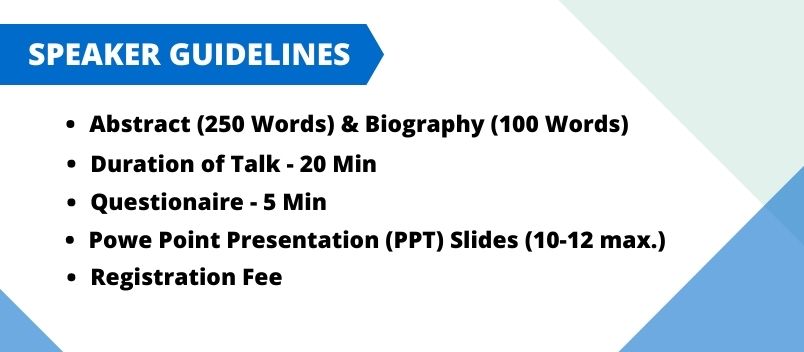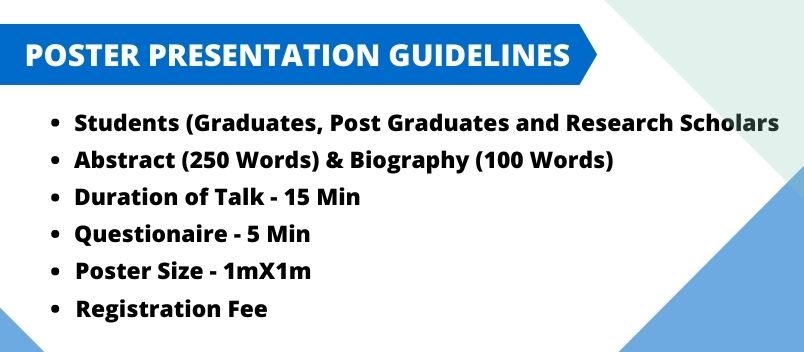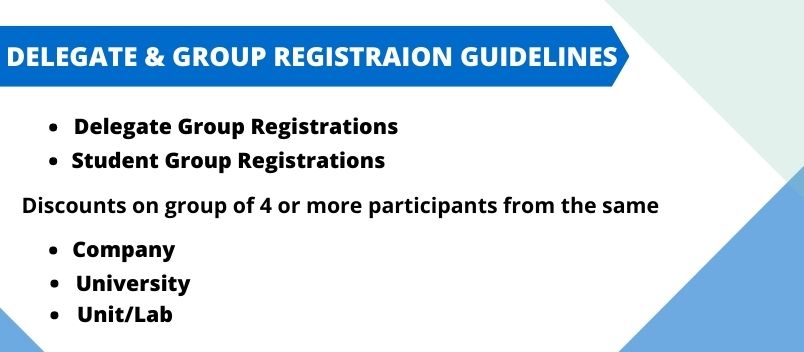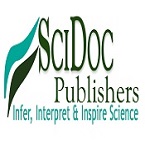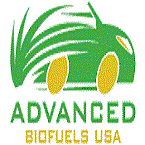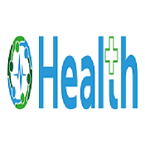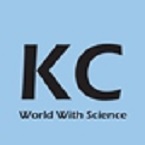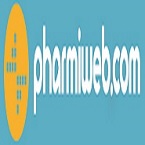Theme: Theme: Novel Trends in Drug Delivery Systems
Euro Pharmaceutics 2022
Pharmaceutical Conferences cordially invites participants from all over the world to attend “20th Annual Congress on Pharmaceutics & Novel Drug Delivery Systems”, scheduled during October 10-11, 2022 at Valencia, Spain
The event offers a best platform with its well organized scientific program to the audience which includes interactive panel discussions, keynote lectures, plenary talks and poster Sessions. Pharmaceutics & Drug Delivery Systems is a global platform to discuss and learn about research Advances in Drug Delivery Research, Drug Targeting and Design, Nano medicine & Nanotechnology, Pharmaceutical Technology, Medicinal Chemistry and Drug Discovery, Novel Drug Delivery Systems, Pre-formulation & formulation aspects, Bio pharmaceutics and Biologic Drugs.
WHO SHOULD ATTEND?
The conference invites Directors, Group Leaders, Professors, Associate Professors, Lecturers, Research Associates, Scientists, Investigators, business delegates from Leading Universities, Pharmaceutical companies, Formulation Scientists, Medical Devices, Researchers, Health care professionals, across the globe providing a better podium, interconnecting the latest research, technological developments in the arena as well as therapeutic aspects. Participating at Novel Drug Delivery International conference will be an excellent opportunity to meet eminent personalities in the fields of pharmaceutics and learn about the latest technological advancements in Novel Drug Delivery systems.
The scientific program includes Keynote & Plenary talks, Video Presentations, Poster Presentations and E-Posters. Furthermore, oral communications of (post)doctoral junior scientists will be considered. It is the goal of the organizers to make this meeting an event of scientific excellence, attractive to both industrial and academic scientists in Pharmaceutical & Novel Drug Delivery systems of Relevant Field.
Track 1: Drug Targeting & Design
The main objective in drug design is to foresee whether a given particle will bind to a target and if so how unequivocally. Molecular mechanics or molecular dynamics are regularly used to predict the conformation of the little particle and to model conformational changes in the biological targets that may happen when the little molecules ties to it. The remedial reaction of a drug relies on the cooperation of drug molecules with cell on cell membrane related biological events at receptor sites in concentration dependent manner.
Molecular mechanics methods may also be used to provide semi-quantitative prediction of the binding affinity. Also, knowledge-l scoring function may be used to provide binding affinity estimates. These methods use linear progression, device knowledge, neural networks or other statistical techniques to derive predictive binding affinity equations by fitting experimental affinities to computationally derived interaction energies between the small molecule and the target.
Related Conferences: Pharmaceutical Conferences | Pharmaceutical Events | Drug Delivery Events | Pharma Conferences | Pharmaceutical Meetings
Track 2: Pharmaceutical Technology
Pharmaceutical technology is the appliance of scientific knowledge or technology to pharmacy, pharmacology, and the pharmaceutical industry. It includes design, techniques, and instrumentation in the manufacture, preparation, compounding, dispensing, packaging, and accumulating of narcotic and other preparations used in diagnostic and determinative procedures and in the treatment of patients.
Related Conferences: Pharmaceutical Conferences | Pharmaceutical Events | Drug Delivery Events | Pharma Conferences | Pharmaceutical Meetings
Track 3: Nano medicine & Nanotechnology
Nano medicine is the medical application of nanotechnology. Nano medicine shows from the useful applications of nanomaterials and biological devices, to Nano electronic biosensors, and even possible future applications of molecular nanotechnology such as biological machines. Current problems for Nano medicine involve understanding the issues related to toxicity and environmental impact of nanoscale materials. The industrialization of nanoscale titanium dioxide for a broad range of applications (most of which we are quite familiar with) is only one such example showing how nanomaterials have become a central component in the manufacturing process during the past decade.
A second area exhibiting a strong development is “nanodrugs” where nanoparticles are designed for targeted drug delivery. The use of such importers improves the drug bio distribution, targeting active molecules to diseased tissues while protecting healthy tissue. A third area of application is regenerative medicine where nanotechnology allows developing biocompatible materials which support growth of cells used in cell therapy.
Related Conferences: Pharmaceutical Conferences | Pharmaceutical Events | Drug Delivery Events | Pharma Conferences | Pharmaceutical Meetings
Track 4: Medicinal Chemistry and Drug Discovery
Medicinal chemistry is a discipline at the overtone of chemistry, particularly synthetic organic chemistry, and pharmacology and various other biological specialties, where they are involved with design, chemical synthesis and development for market of pharmaceutical agents. Earlier, medicinal chemists often optimized and developed compounds without much knowledge of the drug target or pathway in mind. New skills have had an enormous impact on drug discovery since the mid-20th century. Once hits are identified from high throughput screening (or other sources) the chemists may become involved in hit to lead (h2l) studies when hits from screens are effectively triaged and closely scrutinized for ability to serve as full blown lead compounds. Medicinal chemistry has, therefore, grown to encompass a greater range of scientific disciplines in the drug discovery process in order to minimize the cost, time and risk of development. The arrival of newer high powered computational capabilities was one catalyst for this approach. to succeed in the discovery process medicinal chemists have to perform these initial important tasks: identification of lead molecules which have the desired biological activity using new technologies such as hits and combinatorial chemistry, the lead modification or optimization which could be done by employing structure-activity analysis and scale-up of the optimized lead for further drug development process and efficacy testing.
Related Conferences: Pharmaceutical Conferences | Pharmaceutical Events | Drug Delivery Events | Pharma Conferences | Pharmaceutical Meetings
Track 5: Peptides and Protein Drug Delivery
Pharmaceutical and biotechnological research bonds protein drug delivery systems by reputation based on their various therapeutic applications. The effective and potent action of the proteins/peptides makes them the drugs of choice for the treatment of numerous diseases. Main investigation topics in protein delivery include the conservation of proteins in delivery devices and the design of appropriate target-specific protein carriers. Many efforts have been made for effective delivery of proteins/peptidal drugs through various routes of administrations for successful therapeutic effects.
The collective importance of proteins and peptides can be recognized to three main developments. First, improved analytical methods have promoted the discovery of numerous hormones and peptides that have found applications as biopharmaceuticals. Second, molecular biology and genetic engineering have allowed the large-scale production of polypeptides previously available only in small quantities. Lastly, there is a better understanding of the role of regulatory proteins/peptides in the pathophysiology of human diseases simultaneously; pharmaceutical companies around the world have endeavored to develop the processes for producing therapeutically active units at commercial scales.
Related Conferences: Pharmaceutical Conferences | Pharmaceutical Events | Drug Delivery Events | Pharma Conferences | Pharmaceutical Meetings
Track 6:Pre- formulation & formulation Aspects
Pharmaceutics is the investigation of connections between preformulation, pharmaceutical plan, conveyance, mien and clinical reaction. The intrinsic unsteadiness nature of another medication will modify its coveted frame into undesired shape when exhibited in a reasonable measurements frame with the excipient/s upon capacity. In early days this procedure was bound just to assess couple of attributes, however today this procedure is being considered as a detailing technique and henceforth gigantic mechanical headway has been accomplished in this field which empowers us to spare time and cash through arranged administration framework and subsequently impacts Use of transcendent measurable programming even in light of counterfeit neural systems administration are influenced the assignment of preformulation and advancement to process simpler. NDDS meeting will talk about on Early Approaches, Present Scenario and Future Prospects of Preformulation occasions. There are more than 1400 supported or controlled discharge drugs have been affirmed everywhere throughout the world. Pharmaceutical gatherings talk about the condition of-craftsmanship innovation being connected and include progresses in definition considers.
Related Conferences: Pharmaceutical Conferences | Pharmaceutical Events | Drug Delivery Events | Pharma Conferences | Pharmaceutical Meetings
Track 7: Novel Drug Delivery Systems
The Novel Drug delivery systems are the system by which a drug is delivered can have a important effect on its efficacy. Some drugs have an optimum concentration range within which maximum benefit is derived, and concentrations above or below this range can be toxic or produce no Local Drug Delivery Systems benefit at all. On the other indicator, the very slow development in the efficacy of the management of modest diseases, has suggested a growing need for a multidisciplinary approach to the delivery of therapeutics to targets in tissues. From this, new ideas on controlling the pharmacokinetics, pharmacodynamics, non-specific toxicity, immunogenicity, bio recognition, and efficacy of drugs were generated. These new methods, often called drug delivery systems (DDS), are based on interdisciplinary approaches that combine polymer science, pharmaceutics, bio conjugate chemistry, and molecular biology. On the other hand, this reference discusses advances in the design, optimization, and adaptation of gene delivery systems for the treatment of cancer, cardiovascular, pulmonary, genetic, and infectious diseases, and considers valuation and review processes involved in the development of gene-based pharmaceuticals.
Related Conferences: Pharmaceutical Conferences | Pharmaceutical Events | Drug Delivery Events | Pharma Conferences | Pharmaceutical Meetings
Track 8: Medical Devices for Drug Delivery
Any device, apparatus, application, software, material or other article, whether used only or in blend, together with any accessories, including the software intended by its manufacturer to be used specifically for diagnostic and/or therapeutic purposes and necessary for its proper application, intended by the manufacturer to be used for human beings for the purpose of:
· Diagnosis, prevention, observing, treatment, or improvement of disease
· Diagnosis, monitoring, treatment, improvement of, or compensation for an injury or handicap
· Investigation, replacement, or modification of the anatomy or of a physiological process
· Control of derivation; and which does not realize its major intended action in or on the human body by pharmacological, immunological, or metabolic means, but which may be assisted in its function by such means
Medical devices vary according to their intended use and indications. Examples range from simple devices such as tongue depressors, medical thermometers, and disposable gloves to advanced devices such as computers which assist in the conduct of medical testing, implants, and prostheses. The design of medical devices creates a major part of the field of mechanical engineering.
Related Conferences: Pharmaceutical Conferences | Pharmaceutical Events | Drug Delivery Events | Pharma Conferences | Pharmaceutical Meetings
Track 9: Drug Delivery Research
Drug delivery describes the tactic and approach to delivering medicine or and different xenobiotics to their site of action inside an organism, with the goal of achieving a therapeutic outcome. problems with pharmacodynamics and pharmacokinetics area necessary concerns for drug delivery. Designing and developing novel drug delivery systems, with attention on their application to sickness conditions. diagnosis and clinical knowledge associated with drug delivery systems. Drug distribution, pharmacokinetics , clearance, with drug delivery systems as compared to ancient dosing to demonstrate helpful outcomes. short and long biocompatibility of drug delivery systems, host response. Biomaterials with growth factors for stem-cell differentiation in regenerative medication and tissue engineering. Devices for drug delivery and drug/device combination product.
Track 10: Pharmacokinetics and Pharmacodynamics
Pharmacodynamics is the significance that drugs have on the main part; while pharmacokinetics is the study of the way in which drugs move through the body during absorption, distribution, metabolism and excretion. Pharmacokinetics influences decisions over the route of administration. For drugs to produce their effects they must interact with the body. This can ensue in several behaviors and depends on the properties of the drug, and will be discussed later in this chapter. Pharmacokinetics influences decisions over the route of administration. The processes that occur after drug admin can be fragmented down into four distinct areas (known as ADME).
Related Conferences: Pharmaceutics Conferences | International Drug Delivery Conferences | Pharmaceutical Events | Drug Delivery Symposiums
Track 11: 2D & 3D Printing in Drug Delivery
There has been improved movement in the field in recent times concerning the development and research on various printing techniques in fabrication of dosage forms and drug delivery systems. A general overview of 2D printing techniques is presented including a review of the most recent literature where printing techniques are used in fabrication of drug delivery systems. The upcoming perspectives and possible influences on formulation strategies, flexible dosing and personalized medication of using printing techniques for fabrication of drug delivery systems are discussed.
The 3D printing has enabled the fabrication of prototypes of DDD with varying complexity and shows that customization of drug products is possible. There is potential to improve patient-specific drug therapies of the future using printing technologies. The technological advancements, new scientific concepts, interdisciplinary work and defined regulatory guidelines will continue to support and strengthen the prospects of 3D printing as an option in the manufacture of medical products.
Related Conferences: Pharmaceutics Conferences | International Drug Delivery Conferences | Pharmaceutical Events | Drug Delivery Symposiums
Track 12: Bio pharmaceutics and Biologic Drugs
Biopharmaceutics is defined as the study of factors influencing the rate and amount of drug that reaches the systemic circulation and the use of this information to optimize the therapeutic efficacy of the drug products. The process of movement of drug from its site of administration to the systemic circulation is called as absorption. The concentration of drug in plasma and hence the onset of action, and the intensity and duration of response depend upon the bioavailability of drug from its dosage form. Bioavailability is defined as the rate and extent (amount) of drug absorption. Any alteration in the drug’s bioavailability is reflected in its pharmacological effects.
Biologic Drugs are genetically occurred from a living organism, such as a virus, protein, to maintain the body’s natural response to infections and diseases. Biologics target proteins, and cells responsible for the appearance and injury of rheumatoid arthritis and other types of inflammatory arthritis. The proteins targeted include tumors necrosis factor (TNF), interleukin-1 (IL-1) and interleukin-6 (IL-6), which shows effect in joint inflammation. Biologics are reserved for people whose arthritis has not retorted well to disease-modifying anti rheumatic drugs (DMARDs).
Related Conferences: Pharmaceutics Conferences | International Drug Delivery Conferences | Pharmaceutical Events | Drug Delivery Symposiums
Track 13: Nanotechnology in Drug Delivery - Heart Disease
Nanoparticles that are both synthetic HDL and contain a MRI different agent (iron oxide). The researchers are now conducting animal studies to determine how well the artificial HDL (high density lipoprotein) treats arterial plaque. Nanoparticle that can deliver drugs to tablet on the wall of an artery. They attach a protein called a peptide to a nanoparticle, which then binds with the surface of the plaque. While white blood cells are supposed to protect us from harmful intruders, when they attack LDL molecules they can actually cause plaque deposits on artery walls. Researchers at Rutgers have established a nanoparticle called a nanolipoblocker that is designed to attach itself to white blood cells to block them from attacking LDL cholesterol molecules. Nanoparticles that target proteins common to blood clots have been developed to deliver bismuth to clots and unstable plaque in the bloodstream.
Related Conferences: Pharmaceutics Conferences | International Drug Delivery Conferences | Pharmaceutical Events | Drug Delivery Symposiums
Track 14: Drug Delivery Behaviors by NMR Spectroscopy
Nuclear magnetic resonance (NMR) spectroscopy is the most widely applicable method for drug discovery and analysis. This technique provides a highly specific tool for identifying a drug substance containing impurities and residual solvents and their metabolites in biological media. It also provides a suitable analytical technique for their absolute quantification. In recent years, NMR spectroscopy has been increasingly used to monitor the cumulative drug release, drug dissolution, and diffusion coefficient of drugs from drug delivery systems in vitro and in vivo. Furthermore, this technique provides a better understanding of the release behaviors of drugs from drug delivery systems based on diffusion, dissolution, and osmosis mechanisms. Although early studies have been mainly qualitative in nature, these techniques can offer considerable information on release processes at the molecular level. Moreover, NMR spectroscopy has been used to detect structural changes that occur in drug delivery systems during the dissolution process.
Related Conferences: Pharmaceutics Conferences | International Drug Delivery Conferences | Pharmaceutical Events | Drug Delivery Symposiums
Track 15: Advance Topics in Drug Delivery
The importance of drug delivery to chemists, medicinal and otherwise, has increased since the advent of integrated drug discovery processes. Physicochemical and biological barriers, pathways for drug delivery, formulation, pharmacokinetic and pharmacodynamics issues, metabolism, and cell culture models used in studying drug delivery are just some of the topics that type drug delivery and stimulating field for researchers.
Related Conferences: Pharmaceutics Conferences | International Drug Delivery Conferences | Pharmaceutical Events | Drug Delivery Symposiums
Track 16: Nanomedicine for women’s Healthcare
Sustained drug delivery has the prospective to improve the treatment and prevention of many circumstances and diseases that afflict the female reproductive tract. However, achieving effective, therapeutic delivery in the vaginal tract is challenging due to vaginal physiology. To overcome these issues, we are emerging nanomedicines and novel delivery vehicles that can provide sustained release (improving effectiveness) and deliver drugs uniformly to the target surface. Improved local vaginal delivery has promise for preventing preterm birth and sexually transmitted infections, as well as treating bacterial vaginosis and cervical cancer. Confined delivery could not only improve the efficiency of cancer treatment, but also dramatically improve patient quality of life by reducing the side effects associated with systemic chemotherapy. We also use our nanotechnologies to gain fundamental understanding of the factors that lead to infections in the female reproductive tract.
Related Conferences: Pharmaceutics Conferences | International Drug Delivery Conferences | Pharmaceutical Events | Drug Delivery Symposiums
Track 17: Biomarkers Detection & Nanoparticle based Drug Delivery Systems
These novel systems involve use of nanoparticles, superparamagnetic materials, protein biosensors, and advanced light assisted molecular immobilization technology. The group has acquired fundamental knowledge on light activated mechanisms in protein structures. Using ultravioletâ€light it is possible to open disulphide bonds in proteins leading to protein immobilization onto thiol reactive surfaces (glass, quartz or gold surfaces). This work has paved the way for the development of a unique light assisted immobilization technology (LAMI) applied to the development of a new biosensor microarraying technology with micrometer and subâ€micrometer resolution and to engineering new nanoparticle based drug/protein carriers. The bioconjugates can be used to identify molecules that recognize and bind to the biomarker. The biomarker may indicate disease, and its corresponding receptor may provide knowledge for designing novel pharmaceuticals, which can be used for treatment.
Related Conferences: Pharmaceutics Conferences | International Drug Delivery Conferences | Pharmaceutical Events | Drug Delivery Symposiums
Track 18: Challenges in Delivery of Therapeutic Genomics and Proteomics
Delivery of therapeutic proteomics and genomics characterize a significant area of drug delivery research. Genomics and proteomics approaches could be used to direct drug development processes by unearthing pathways involved in disease pathogenesis where intervention may be most successful.
The fundamentals of genomics and proteomics and highlights the various chemical, physical and biological approaches to protein and gene delivery.
Related Conferences: Pharmaceutics Conferences | International Drug Delivery Conferences | Pharmaceutical Events | Drug Delivery Symposiums
Track 19: Smart Drug Delivery Systems
An ideal drug delivery system needs to execute multiple tasks, which involves the highest degree of smartness. While delivering the drug at the desired location requires surface modification with a suitable targeting moiety that will enable the carrier to bind to cells of interest, delivery of necessary amount of drug necessitates incorporation of a trigger that will regulator the amount of drug released at a given instant. The trigger could either be a stimulus provided externally (extrinsic triggers) or could be due to the internal environment of the system in which the drug delivery system is introduced (internal triggers). In theoretical field, variety of smart DDSs have been plentifully demonstrated for various intriguing systems, such as stimuli-responsive polymeric nanoparticles, liposomes, metals/metal oxides, and exosomes.
Related Conferences: Pharmaceutics Conferences | International Drug Delivery Conferences | Pharmaceutical Events | Drug Delivery Symposiums
Track 20: Pharmaceutical Marketing
Sometimes called Medico-marketing or Pharma Marketing in some countries. It is the business of advertising or otherwise promoting the sale of pharmaceuticals or drugs. Emergences of new technology in recent years help in promotion. Pharmaceutical companies explore online marketing as an alternative way to reach physicians, their customers.
This market is expected to reach about $100.7 billion by 2019, registering a compound annual growth rate (CAGR) of 3.8% from 2014 to 2019.
Related Conferences: Pharmaceutics Conferences | International Drug Delivery Conferences | Pharmaceutical Events | Drug Delivery Symposiums
This market is expected to reach about $100.7 billion by 2019, registering a compound annual growth rate (CAGR) of 3.8% from 2014 to 2019.
The global drug delivery technology market is projected to reach USD 1,669.40 Billion by 2021 from USD 1,179.20 Billion in 2018, at a CAGR of 7.2% during the forecast period. This market is segmented based on route of administration, facility of use, and region.
The drug delivery technology market is highly competitive market with various players. Prominent players in this market include Johnson & Johnson, Inc. (U.S.), F. Hoffman-La Roche (Switzerland), Merck & Co., Inc. (U.S.), Bayer AG (Germany), Pfizer, Inc. (U.S.), Novartis AG (Switzerland), 3M Company (U.S.), Becton, Dickinson and Company (U.S.), GlaxoSmithKline plc, (U.K.), Sanofi (France), and Antares Pharma, Inc. (U.S.).
Rising prevalence of chronic diseases, growth in biologics market, technological advancements and new product launches are some of the major factors driving the growth of the market. Drug delivery technologies improve the efficacy and safety of a drug by controlling the rate, time, and place of drug release in the body.
The drug delivery technology market is expected to witness significant growth in the coming years, due to the technological advancements and new product launches. With the rise in prevalence of diseases, it has become important for companies to manufacture smart and fast technologies, which offer effective treatments for diseases. A majority of companies operating in this market are involved in the research and development of drug delivery systems that can effectively cater to the needs of patients and enable effective delivery of drugs. This is expected to create growth opportunities for drug delivery companies in the market.
North America is projected to dominate the market in 2018, with the U.S. accounting for a major share. However, Asia is expected to grow at the highest CAGR during the forecast period. This growth can be attributed to investments by major companies in the area of R&D activities. Also, this region has low costs of labor and clinical trials, which has further served to draw market players to Asia.
Apart from the comprehensive geographical analysis, product analysis, and market sizing; this report also provides a competitive landscape that covers the growth strategies adopted by industry players in the last three years. In addition, the company profiles comprise basic views on the key players and their product portfolios, developments, and strategies adopted. The above-mentioned market research data, current market sizes, and forecast of future trends will help key players and new entrants make informed decisions regarding product offerings, geographical focus, change their strategic approach, R&D investments for innovations in products and technology, and levels of output in order to remain successful.
Target Audience:
- Drug Delivery Technology Manufacturers
- Public and Private Physicians
- Healthcare Institutions (Medical Data Centers)
- Research & Clinical Laboratories
- Distributors and Suppliers of Drug Delivery Technologies
- Health Insurance Payers
- Market Research and Consulting Firms
Scope of the Report
This report categorizes the drug delivery technology market into the following segments and subsegments.
Drug Delivery Technology Market, by Route of Administration
- Oral
- Injectable
- Topical
- Ocular
- Nasal
- Pulmonary
- Transmucosal
- Implantable
Drug Delivery Technology Market, by Facility of Use
- Hospitals
- Ambulatory Surgical Centers
- Home Care settings
- Diagnostic Centers
- Other Facilities of Use
Drug Delivery Technology Market, by Region
North America:
· U.S.
· Canada
Europe
· Germany
· France
· U.K.
· Rest of Europe (RoE)
Asia:
· China
· India
· Japan
· Rest of Asia (RoA)
· Rest of the World (RoW)
Pharmaceutical Conferences cordially invites participants from all over the world to attend “18th Annual Congress on Pharmaceutics & Drug Delivery Systems”, scheduled during June 27-28, 2019 at Amsterdam, Netherlands, mainly focused on the theme “Future Prospective and New Era Technologies in Pharmaceutics and Drug Delivery".
The event offers a best platform with its well organized scientific program to the audience which includes interactive panel discussions, keynote lectures, plenary talks and poster Sessions. Pharmaceutics & Drug Delivery Systems is a global platform to discuss and learn about research Advances in Anticancer Drug Delivery for tumor targeting ,Drug Delivery Research, Drug Targeting and Design, Nano medicine & Nanotechnology, Pharmaceutical Technology, Medicinal Chemistry and Drug Discovery, Novel Drug Delivery Systems, Pre-formulation & formulation aspects, Biopharmaceutics and Biologic Drugs.
WHO SHOULD ATTEND?
The conference invites Directors, Group Leaders, Professors, Associate Professors, Lecturers, Research Associates, Scientists, Investigators, business delegates from Leading Universities, Pharmaceutical companies, Formulation Scientists, Medical Devices, Researchers, Health care professionals, across the globe providing a better podium, interconnecting the latest research, technological developments in the arena as well as therapeutic aspects. Participating at Pharmaceutics and Drug Delivery International conference will be an excellent opportunity to meet eminent personalities in the fields of pharmaceutics and learn about the latest technological advancements in Novel Drug Delivery systems.
The scientific program includes Keynote & Plenary talks, Video Presentations, Poster Presentations and E-Posters. Furthermore, oral communications of (post)doctoral junior scientists will be considered. It is the goal of the organizers to make this meeting an event of scientific excellence, attractive to both industrial and academic scientists in Pharmaceutical & Drug Delivery systems of Relevant Field.
- Meet Regulatory Expectations
- Devise Strategies
- Discover different statistical methodologies to exhibit with the reference product
- Panel Discussion and Extended Q&A Sessions
- Open forum to discuss your most critical questions around Pharmaceutical Technology, Drug Targeting and Design, Biopharmaceutics and Biologic Drugs, Anticancer drug delivery for tumor targeting, Novel Drug Delivery Systems, Medical Devices for Drug Delivery, Nanomedicine and Nanotechnology, Pre-formulation & formulation Aspects, Biomaterials in Drug Delivery, Medicinal Chemistry and Drug Discovery, The future of Pharma R&D, Drug Delivery Research and many more.
- National & International Speakers
- Networking with National and International Industry stalwarts who will inspire, educate and engage in all the aspects of Pharmaceutics & Drug Delivery Systems.
- Gain insights and enhance your knowledge with Euro Pharmaceutics 2020.
- Provides interaction with the world's well known CEO's and Directors of the Pharmaceutics.
Join your companions the world over focused on getting some solutions concerning Pharmaceutical Sciences related advances, which is your single most obvious opportunity to accomplish the greatest gathering of individuals from the society, coordinate shows, scatter information, meet with recurring pattern and potential specialists, make a sprinkle with new research works, and get name affirmation at this Two-day event. Broadly acclaimed speakers, the most recent research, moves, and the most momentum refreshes in Pharmaceutics & Drug Delivery Systems are indications of this gathering.
Conference Highlights
- Drug Targeting & Design
- Pharmaceutical Technology
- Nano medicine & Nanotechnology
- Medicinal Chemistry and Drug Discovery
- Peptides and Protein Drug Delivery
- Pre- formulation & formulation Aspects
- Novel Drug Delivery Systems
- Medical Devices for Drug Delivery
- Drug Delivery Research
- Pharmacokinetics and Pharmacodynamics
- 2D & 3D Printing in Drug Delivery
- Bio pharmaceutics and Biologic Drugs
- Nanotechnology in Drug Delivery - Heart Disease
- Drug Delivery Behaviors by NMR Spectroscopy
- Advance Topics in Drug Delivery
- Nanomedicine for women’s Healthcare
- Biomarkers Detection & Nanoparticle based Drug Delivery Systems
- Challenges in Delivery of Therapeutic Genomics and Proteomics
- Smart Drug Delivery Systems
- Pharmaceutical Marketing
- Pharmaceutical Biotechnology
To share your views and research, please click here to register for the Conference.
To Collaborate Scientific Professionals around the World
| Conference Date | October 10-11, 2022 | ||
| Sponsors & Exhibitors |
|
||
| Speaker Opportunity Closed | |||
| Poster Opportunity Closed | Click Here to View | ||
Useful Links
Special Issues
All accepted abstracts will be published in respective Our International Journals.
- Journal of Pharmaceutics & Drug Delivery Research
- Pharmaceutica Analytica Acta
- Journal of Pharmaceutical Sciences & Emerging Drugs
Abstracts will be provided with Digital Object Identifier by




